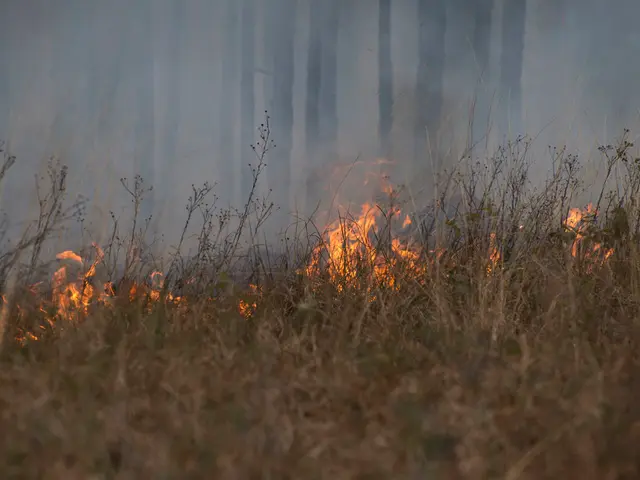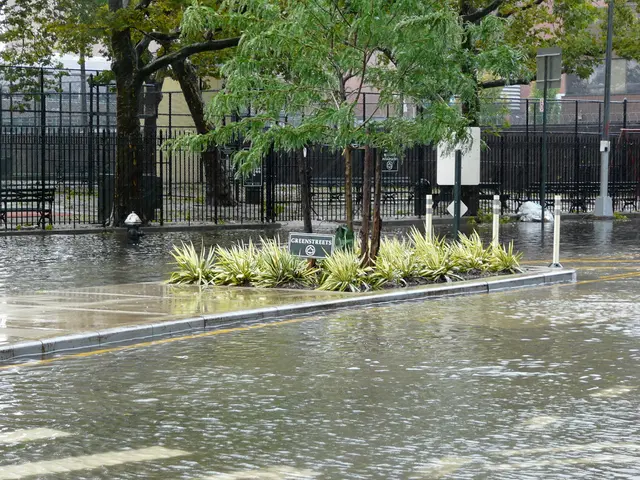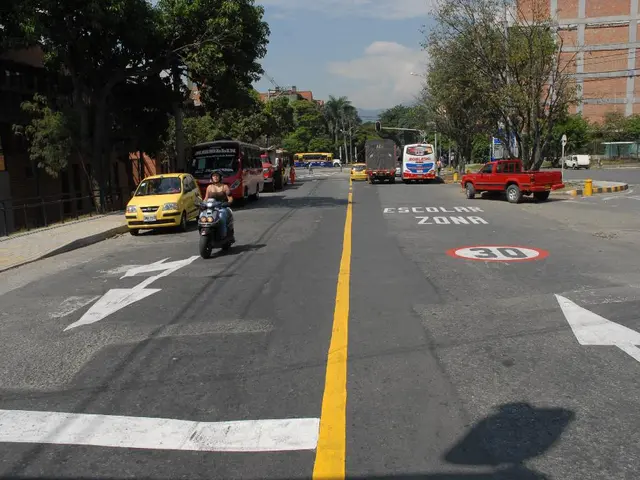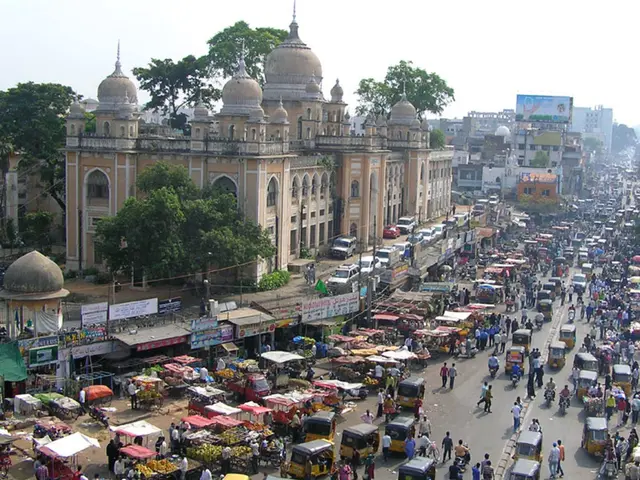Late-night tragedy on the Autobahn: One life lost in a ghastly collision
In a tragic turn of events on the Autobahn 3 near Neu-Isenburg (Offenbach district) last Sunday evening, a person met their untimely demise. The sequence of events began with a rear-end collision between vehicles on the stretch from Offenbacher Kreuz junction to the Frankfurt-Süd exit. The distraught individual, in an attempt to cross the road, was struck by another vehicle and suffered fatal injuries. Witnesses reported that the force of impact sent the person over the crash barrier into the oncoming lane, resulting in their untimely death. The traumatized driver of the car involved in the initial collision survived with shock.
A series of unfortunate events transpired after the lethal incident. Another rear-end collision, with only minor damage, followed in the tailback that ensued. The congested highway toward Cologne necessitated a temporary closure for several hours to conduct an investigation and perform clean-up operations. Regrettably, this disruption further obstructed traffic, leading to another rear-end collision with minor casualties.
Insights into rear-end collisions
While investigators probe the circumstances surrounding the fateful incident, below are some pertinent insights into the primary causes of rear-end collisions on highways, as drawn from extensive research:
- Distracted Driving: Dreadful moments can arise when drivers become preoccupied by their phones, GPS systems, or other electronic devices, causing them to have split-second lapses in attention that can lead to collisions at even moderate speeds.
- Tailgating: Driving too close behind the vehicle in front decreases reaction time and increases the likelihood of a rear-end crash. Maintaining a safe distance based on the three-second rule can effectively prevent collisions.
- Adverse Weather Conditions: Unfavorable weather like rain, fog, or snow creates slippery roads that raise stopping distances, reducing visibility and rendering it more difficult for motorists to judge the spaces between vehicles, leading to increased rear-end accidents.
- Sudden Stops and Traffic Jams: Unforeseen stops in traffic, such as those at traffic lights or caused by obstacles, can take unsuspecting drivers off guard if they are following too closely. By staying focused and maintaining a safe distance, crash-avoiding maneuvers can be executed easily.
- Substandard Road Conditions and Vehicle Maintenance: Pitfalls like potholes, construction zones, and poorly maintained roads create hazards for motorists, whereas vehicles with faulty brakes, worn-out tires, or other malfunctions are less capable of halting quickly, casting a dispiriting shadow over the driver's safety and leading to rear-end collisions.
- Human Error: Errors in judgment including failing to yield or signal, running red lights, and overestimating braking distances constitute many rear-end crash causations. By staying vigilant and careful, collisions may be averted.
Preserving highway safety
To diminish the likelihood of rear-end collisions and minimize their lethal consequences, drivers should emulate the following preventive measures:
- Maintain Attentiveness on the Road: Refrain from distractions while driving, such as consulting cellphones or adjusting the radio, and address such needs safely off the highway.
- Observe the Three-Second Rule: Follow the vehicle in front of you at a distance of at least three seconds over good weather conditions, and extend this distance in rain, fog, or snow. This buffer zone lets you respond to sudden changes on the road without causing problems for yourself or other motorists.
- Diminish Speed during Adverse Weather: Decrease your speed upon encountering rain, fog, or snow. Boost the distance between you and the lead automobile to compensate for reduced visibility and slick road surfaces.
- Display Caution during Traffic Congestion: Stay focused on the traffic flow ahead to anticipate potential hazards and permit yourself adequate time to act.
- Regular Vehicle Maintenance: Regular vehicle examinations of components such as brakes, tires, and engine can uncover potential issues before they transform into causes of rear-end collisions.
- Prudent Compliance with Traffic Signals and Signs: Adhere to traffic signals, signs, and guidelines, especially in busy areas to maintain a safe environment for every driver.
By internalizing these mitigation techniques and remaining mindful of common causes of rear-end collisions, motorists can contribute to more secure and congestion-free highways.








